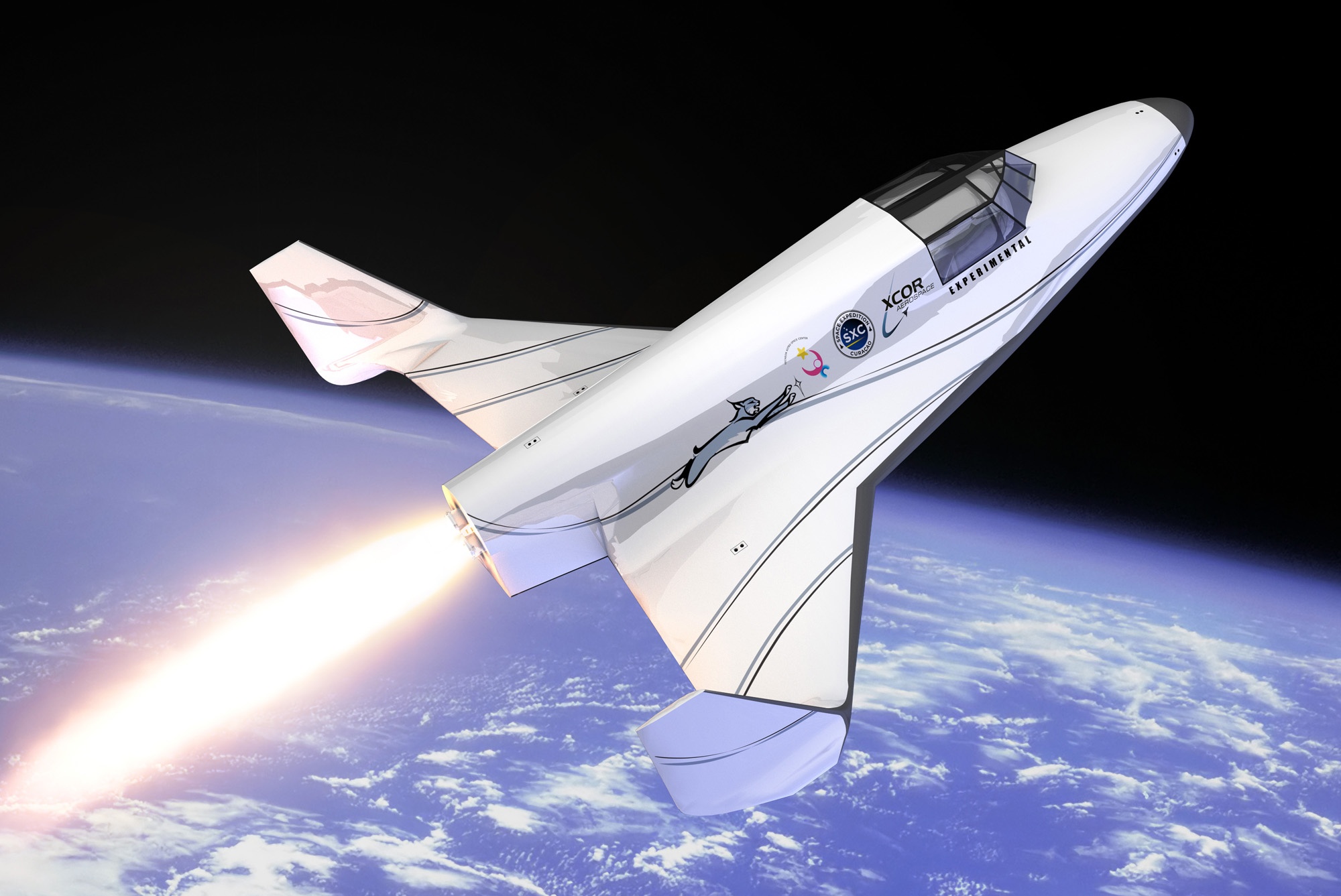XCOR Private Space Company - Part Two of Two Parts
Part Two of Two Parts (Please read Part One first)
In the first part of this post, I talked about the formation and some of the history of XCOR, a private space company in Mojave, CA. I am going to dedicate this part of the post to the new Lynx suborbital launch vehicle being developed by XCOR. XCOR says that it " is now in the phased development of its next generation vehicle, the reusable launch vehicle (RLV) Lynx. In addition to taking a pilot and one spaceflight participant to the edge of space, the vehicle will provide affordable suborbital launch services to academic, scientific, engineering, and observation-related markets. XCOR designs, engineers, assembles, builds, maintains and operates these vehicles on a wet lease basis for spaceflight providers."
The Lynx could be called a space plane because it can take off and land horizontally, like a regular aircraft but it is rocket powered and can carry a pilot, passenger and/or payload to the nominal edge of space at sixty two miles above the Earth. The Lynx was preceded by design and development of a space plane called the Xerus which was undertaken in 2003. The Lynx project replaced the Xerus project in 2008. Initially, the Lynx project was to take two years and launch in 2010. However, construction of the Mark 1 version did not begin until mid 2013 and now has a projected first launch sometime in 2015.
The Lynx is a small craft with a body length and a wingspan both under thirty feet. It has four rocket engines based on the XCOR proprietary rocket propellant piston pump and engine which is compact, light, reliable and powerful. The fuel will be kerosene and liquid oxygen. It has a wrap-around front window for maximum visibility. The passenger seat can be removed and replaced with a payload if needed.
The Lynx Mark I Prototype will be able to climb to forty two miles and carry a primary payload of two hundred and sixty pounds. Top speed will be over fifteen hundred miles per hour. The Mark II production model design has a maximum altitude of sixty six miles which is just above the altitude considered as the "edge of space." It has the same top speed and payload capacity as the Mark 1. The Mark III is essentially the same as the Mark II but with the addition of the External Dorsal Mounted Pod which can carry a payload of about fourteen hundred pounds. This pod is designed to carry a two stage launch vehicle for a microsatellite.
The Lynx launch vehicles can utilize any runway that is at least eight thousand feet long. They should be able to fly up to four missions a day. Launch capacity will be sold commercially and space tourists will be taken for suborbital rides. After 2016, tourists will be flown from a new spaceport on the Caribbean Island of Curacao.
Artist's concept of the Lynx suborbital launch vehicle:
